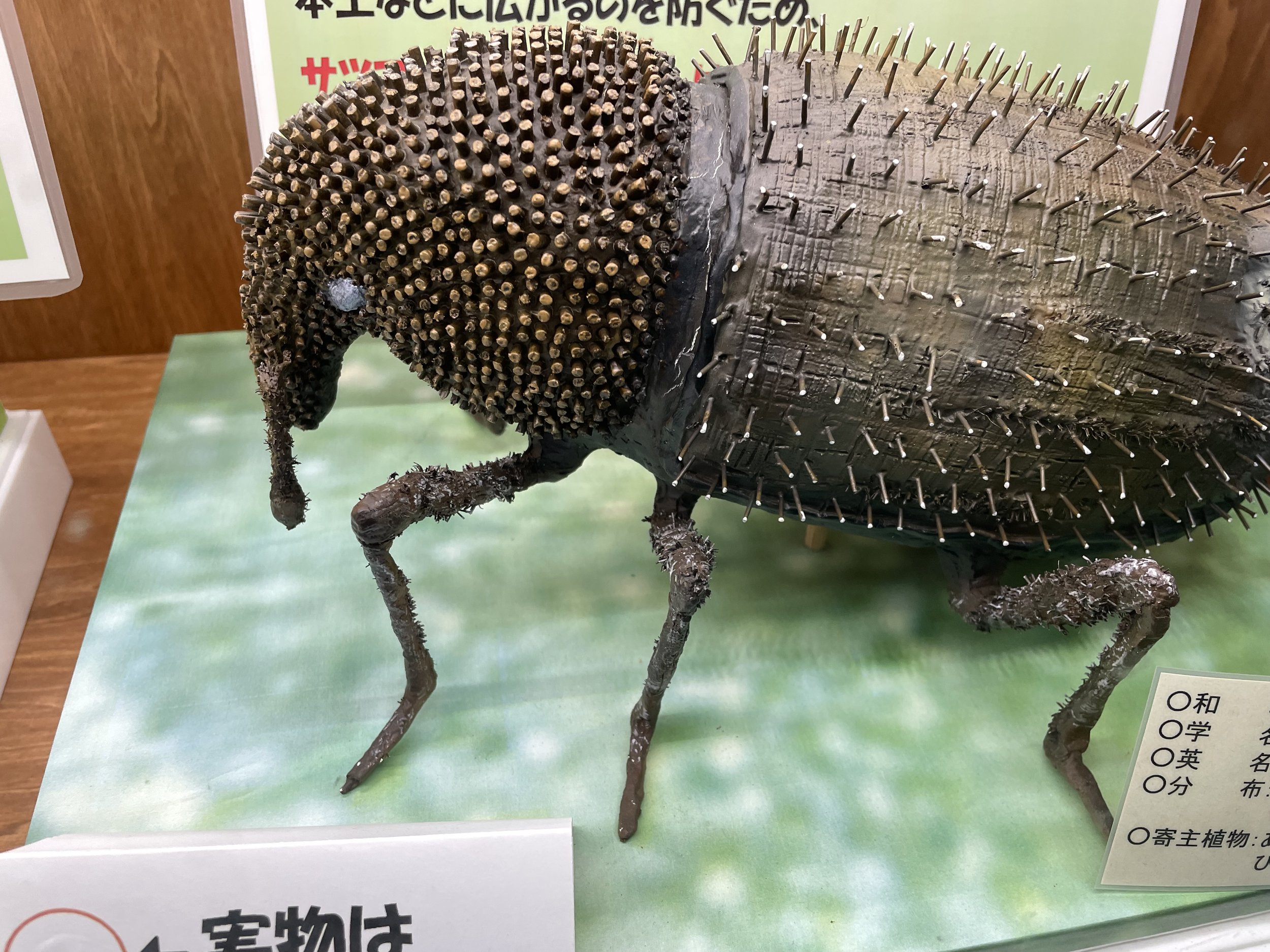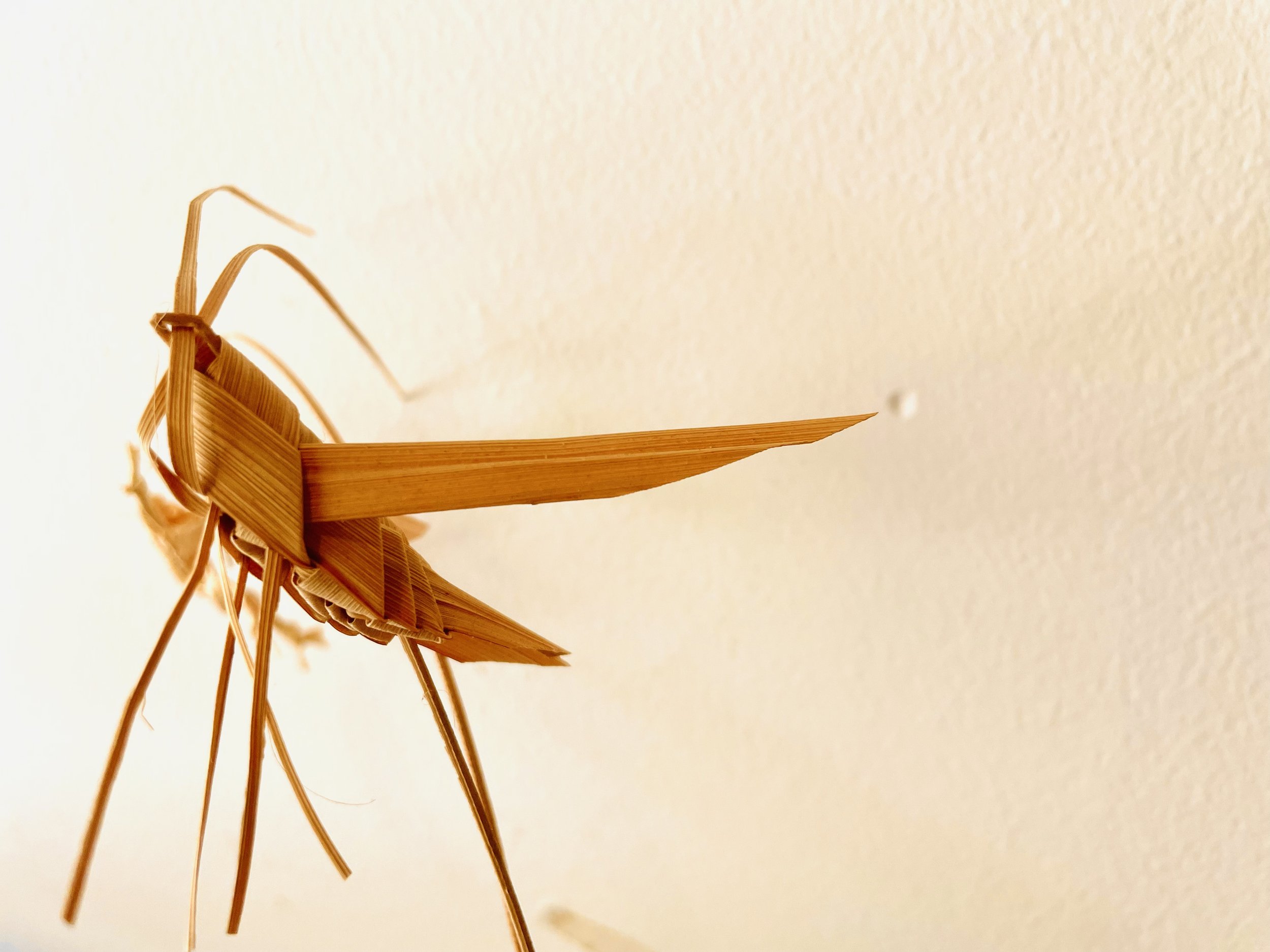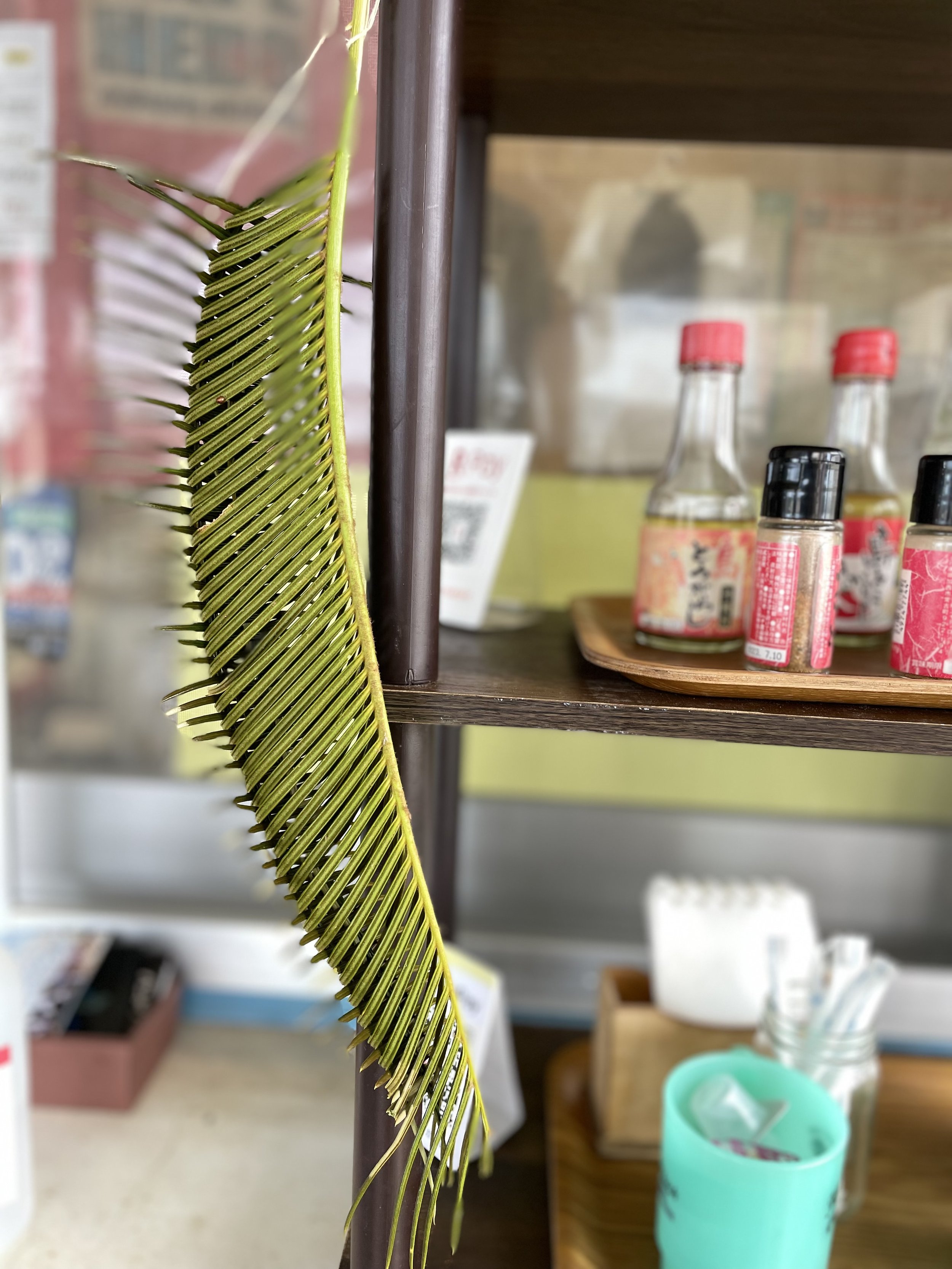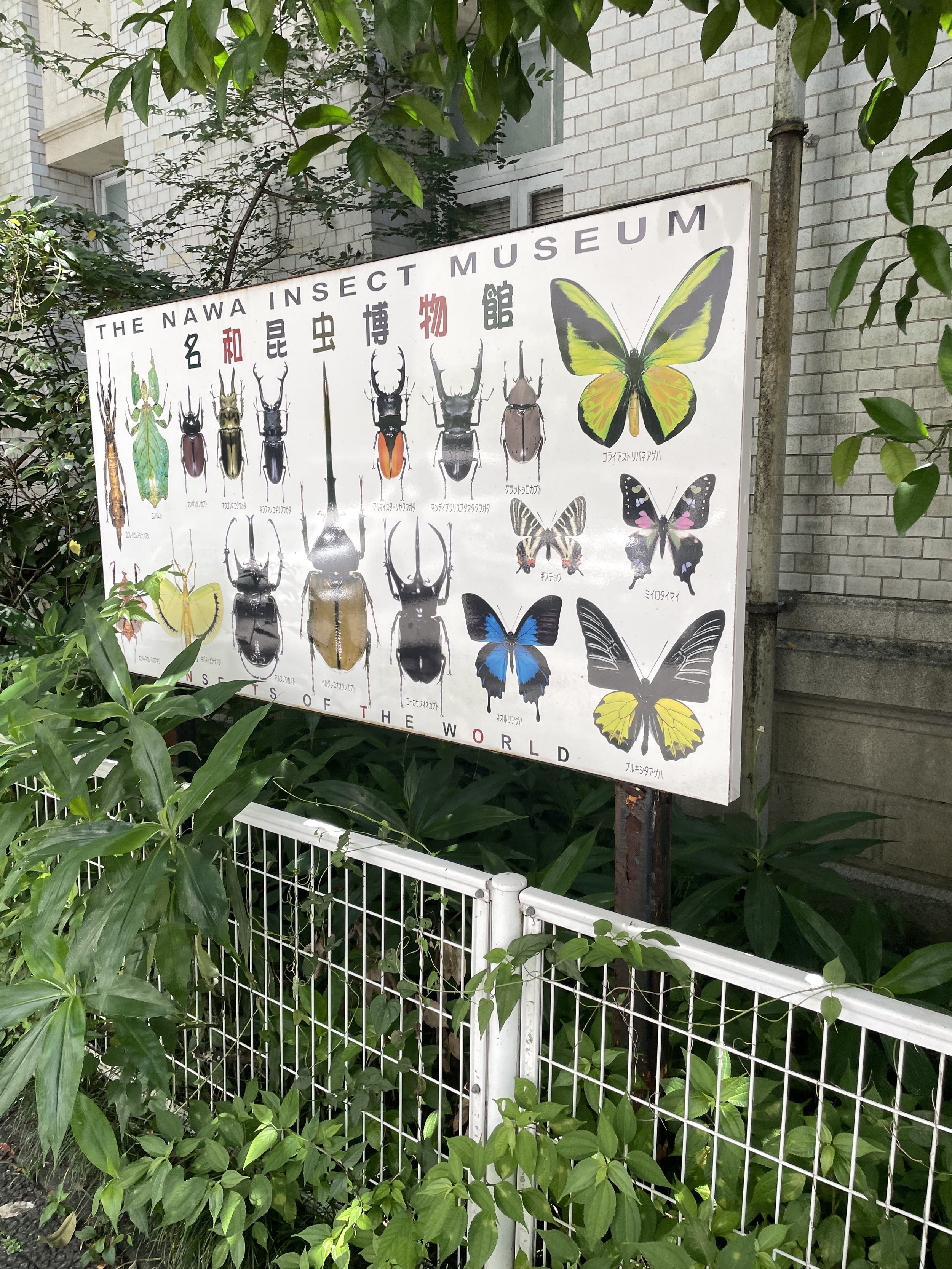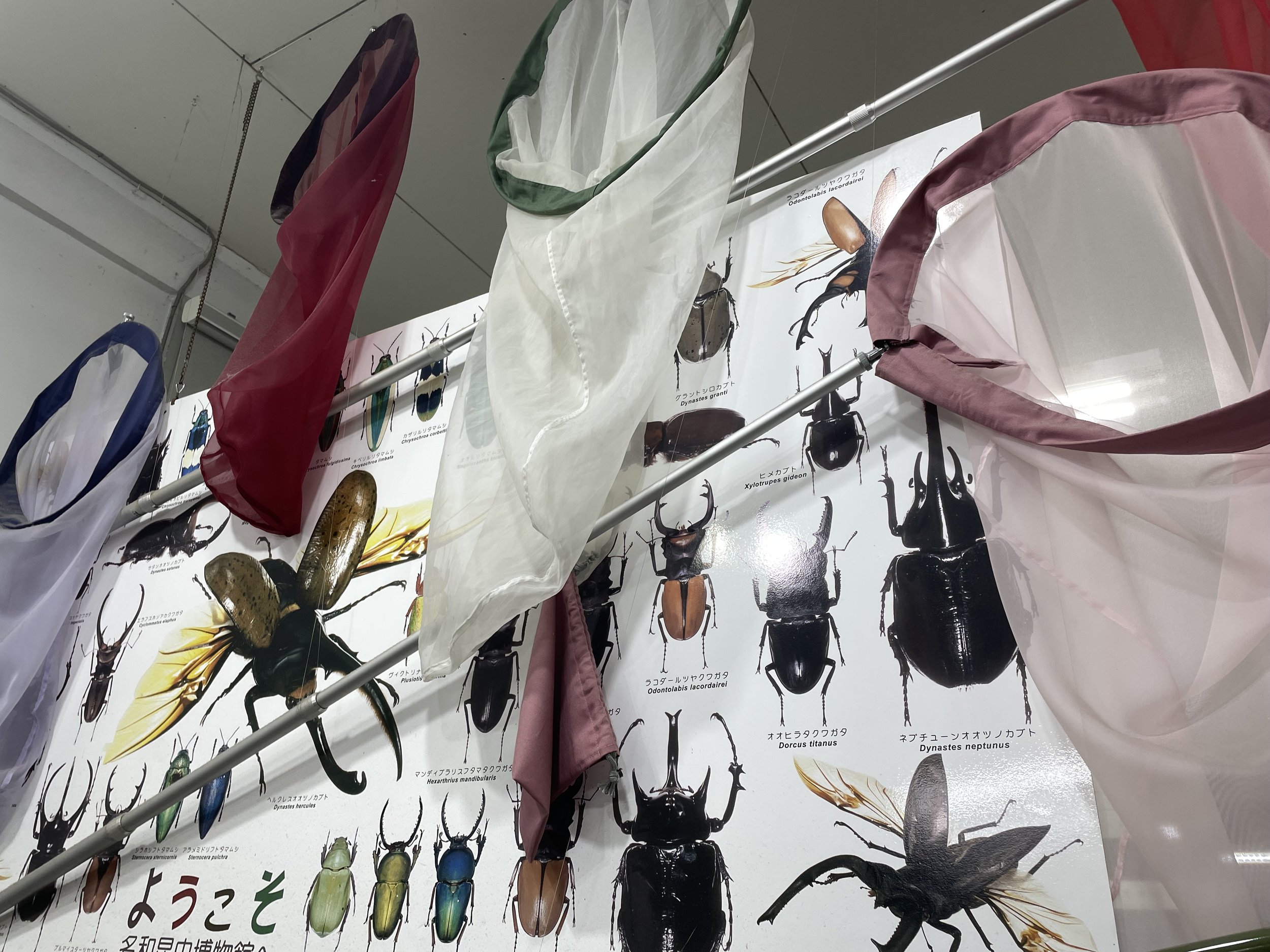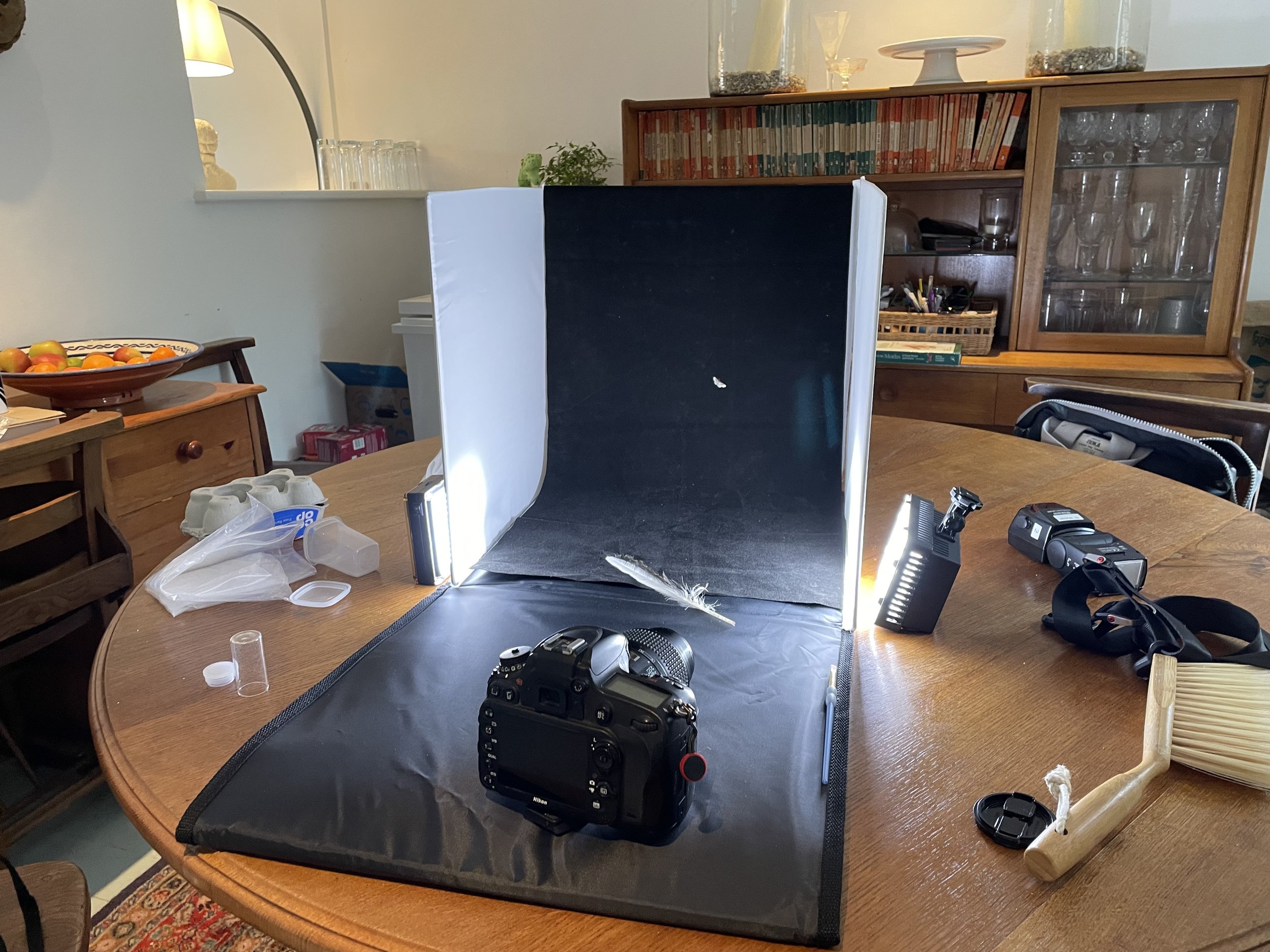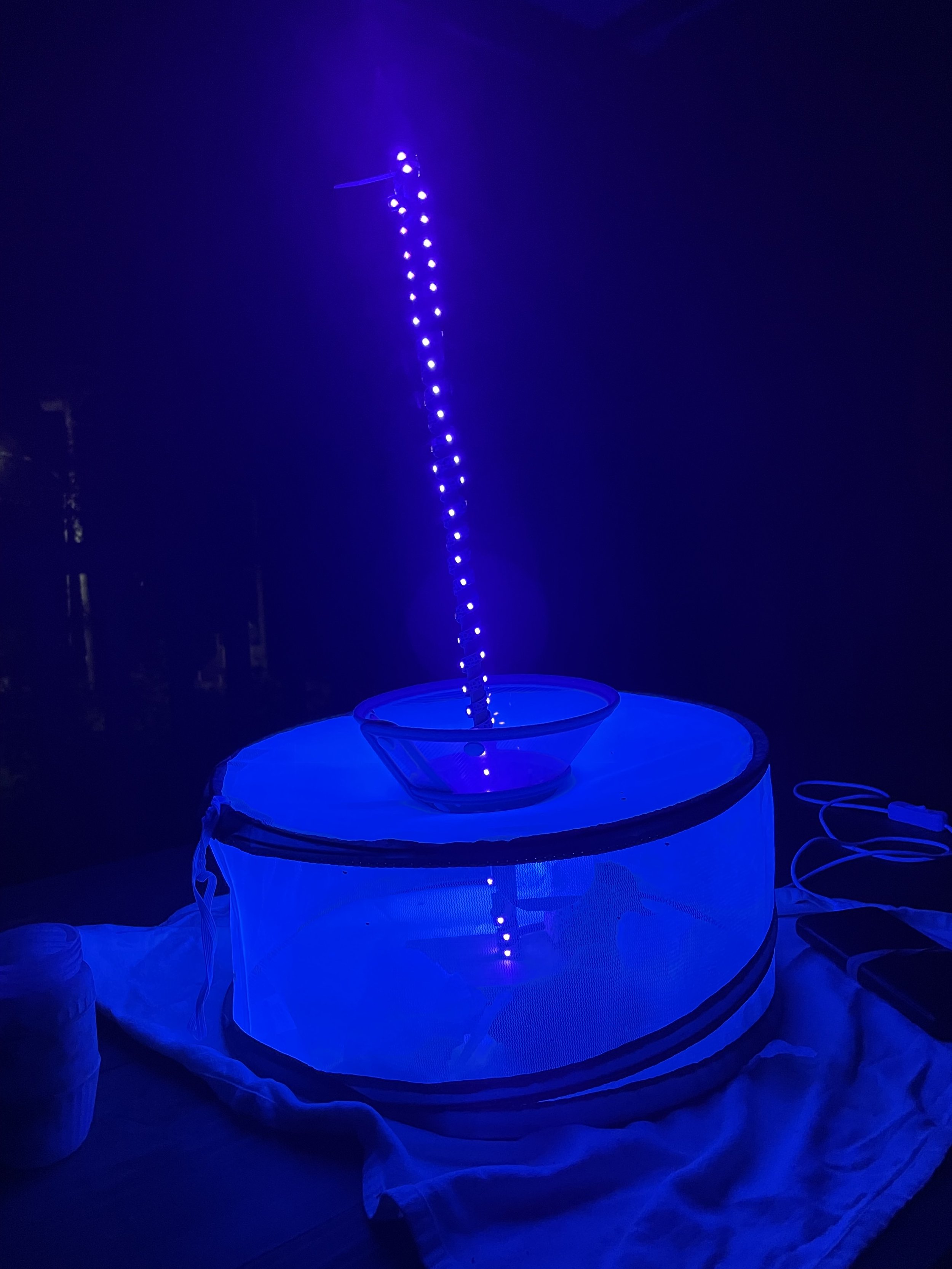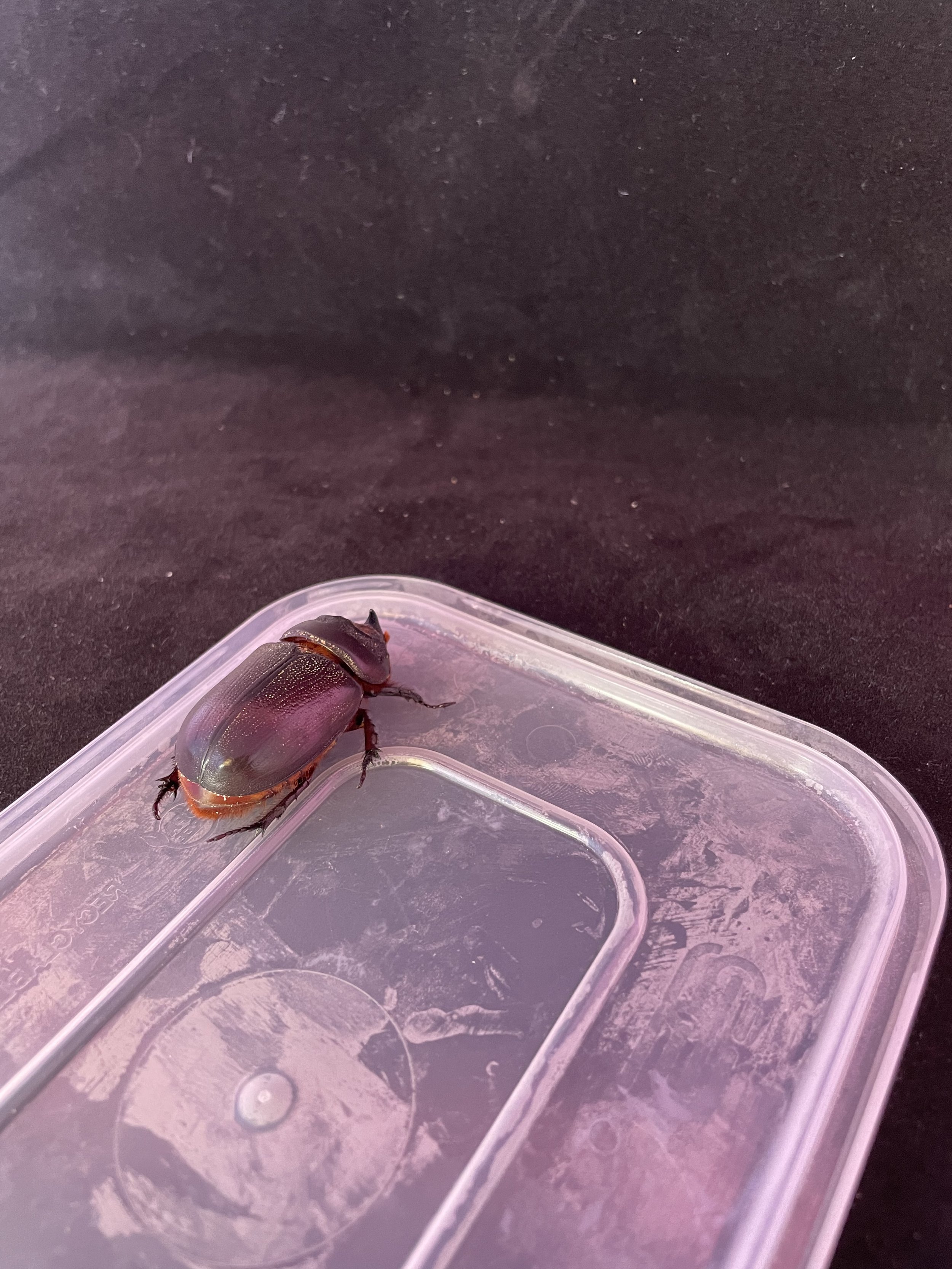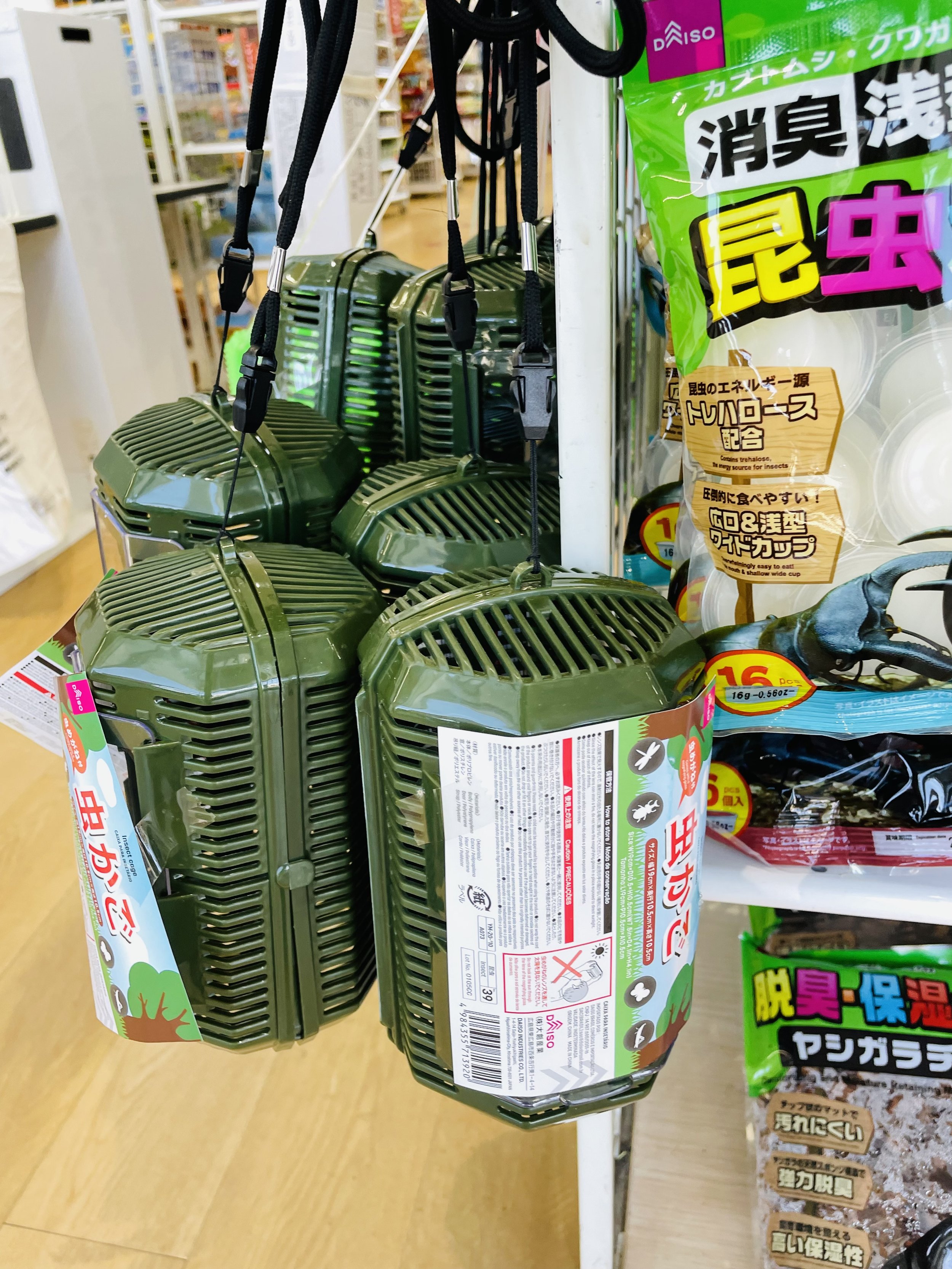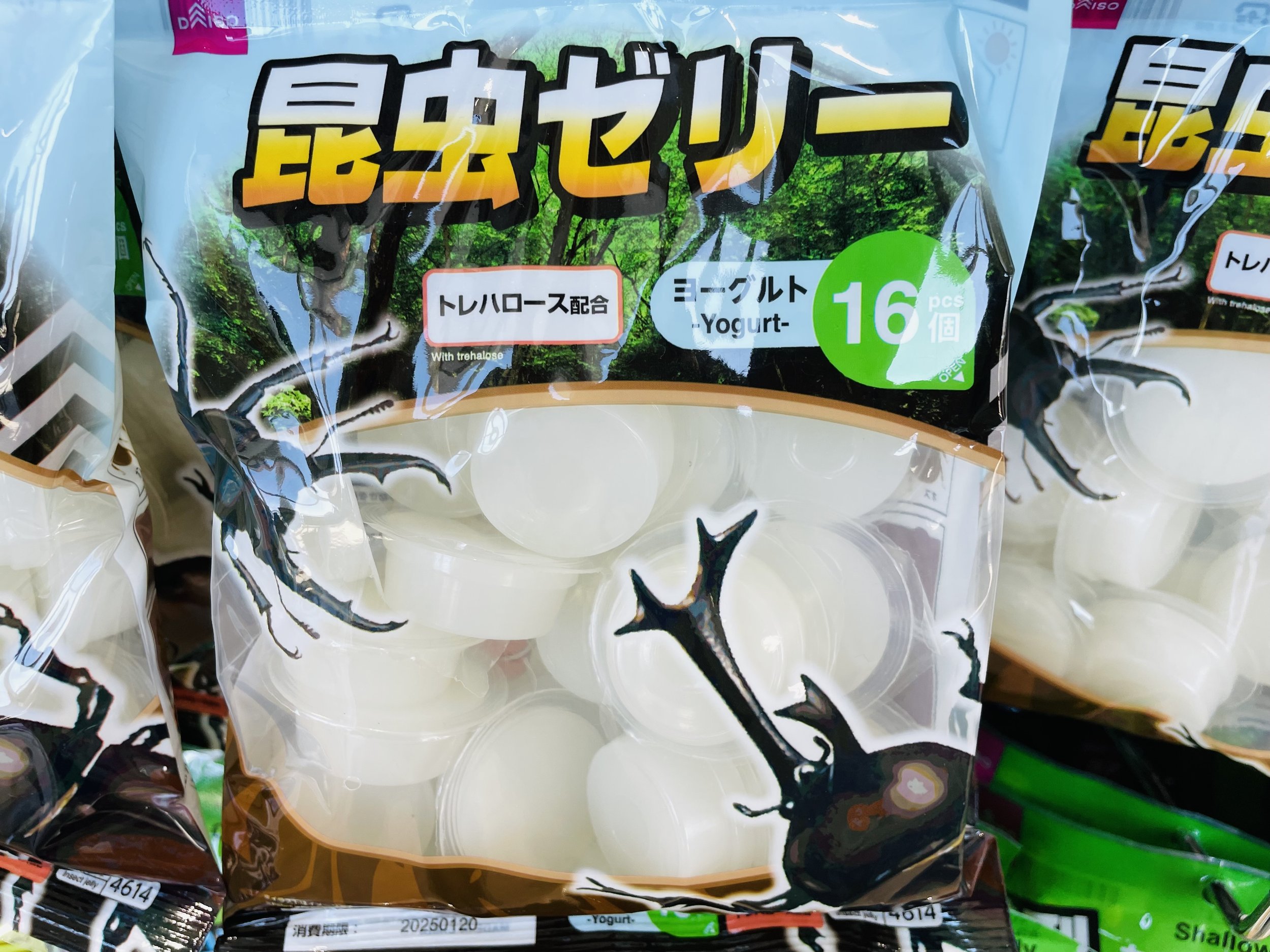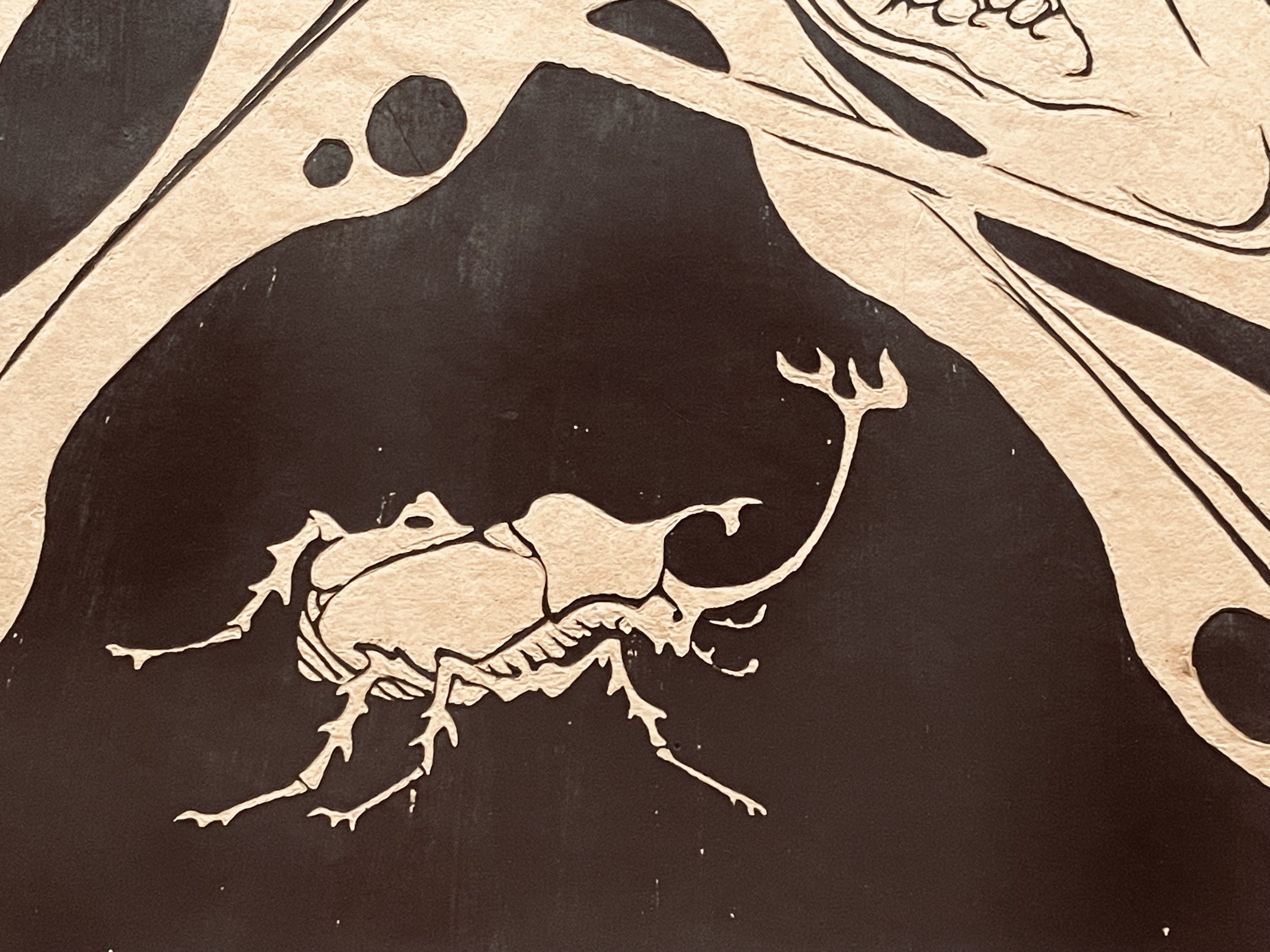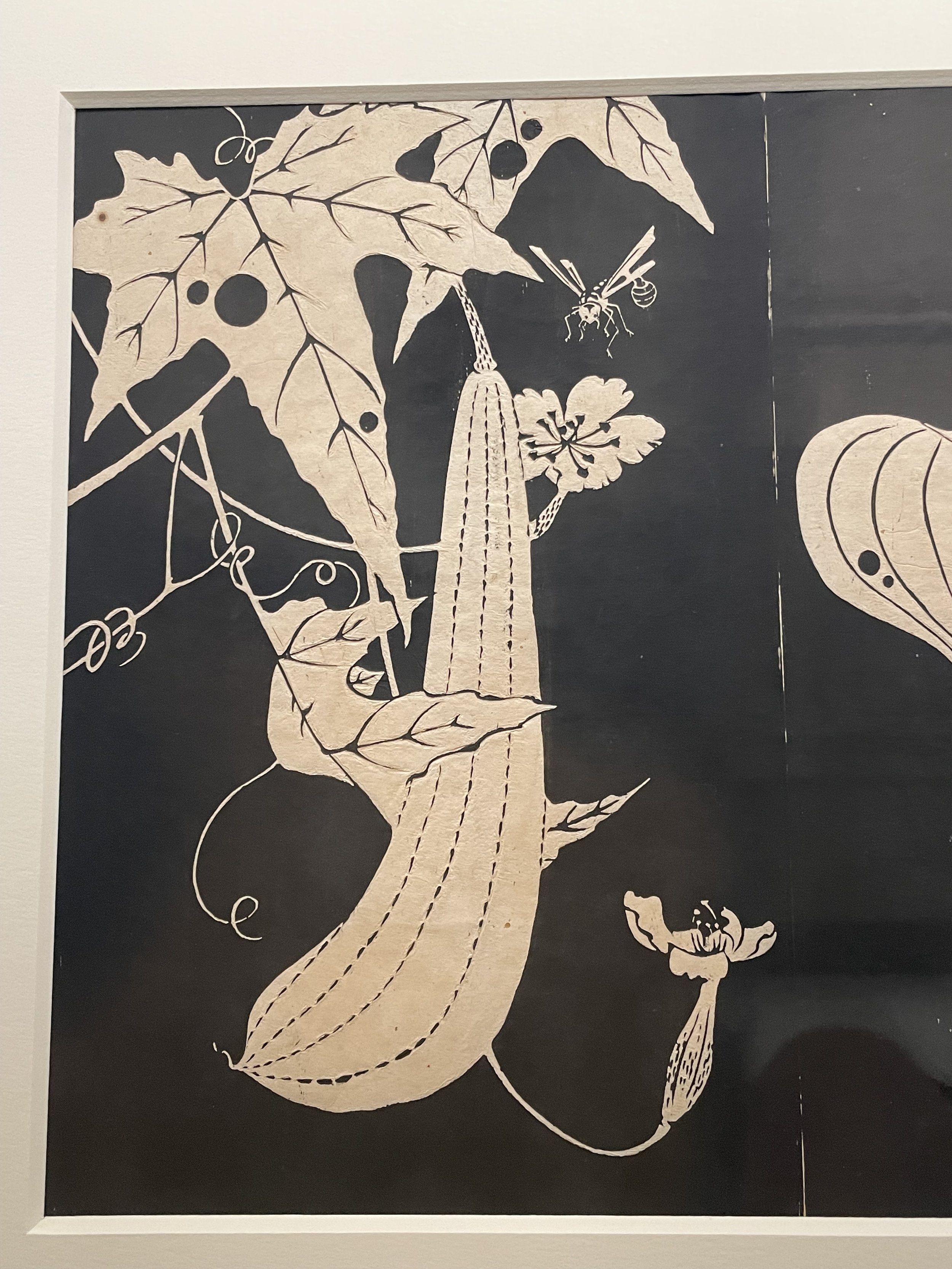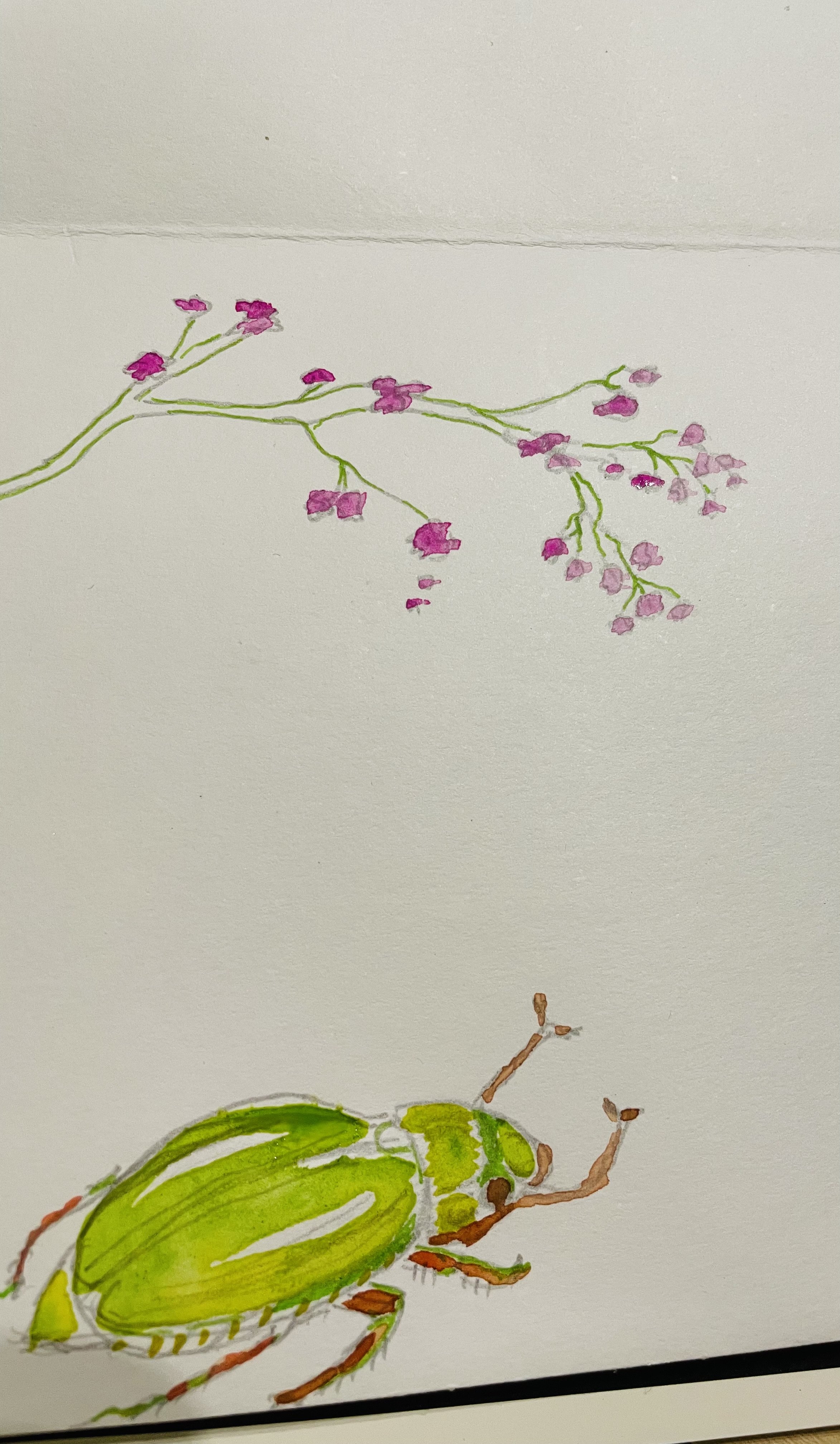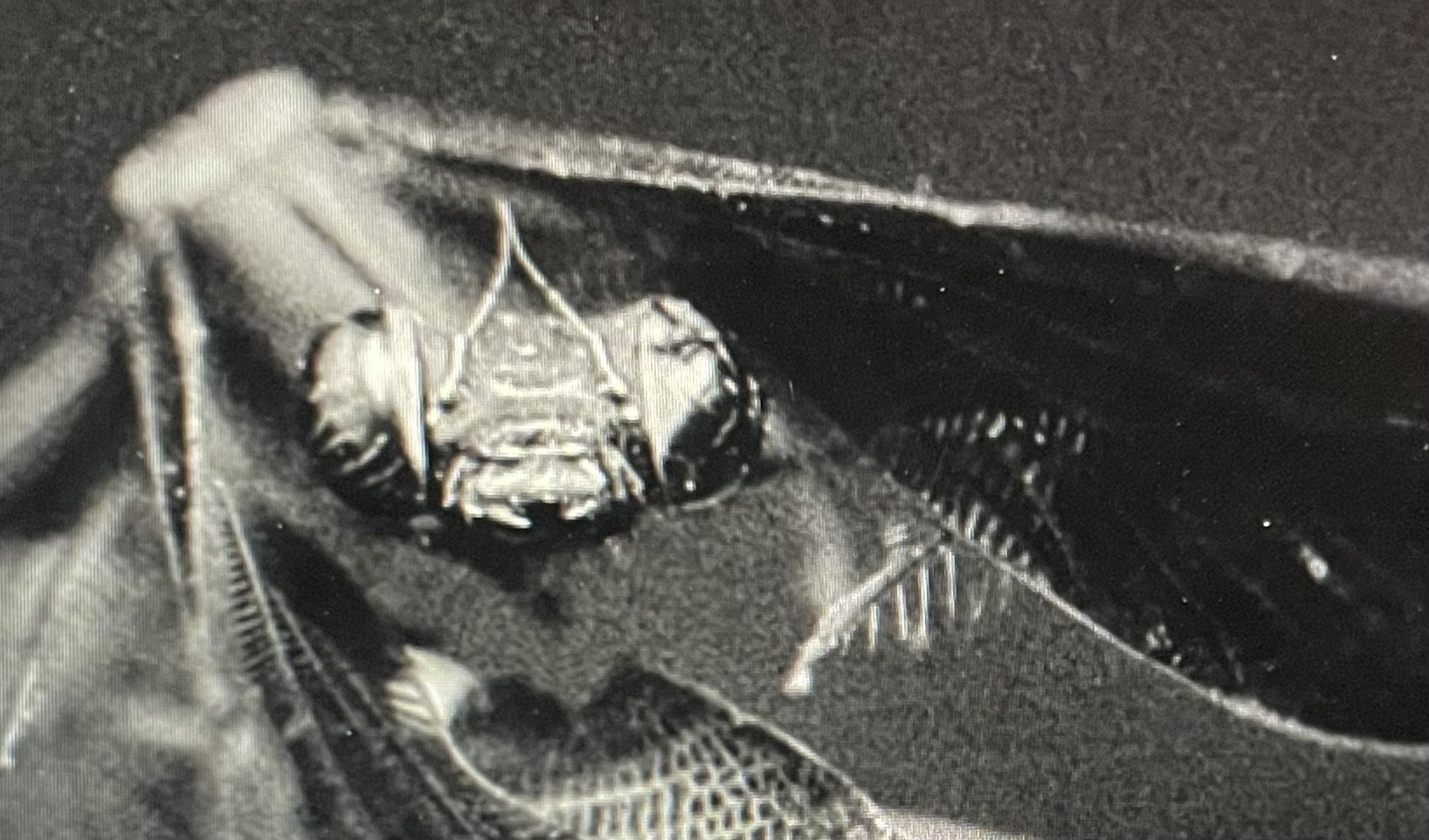Bug Blog
The beetle adventuring in Japan had many layers. From working in a portable moth trap that travelled from Bosham to Okinawa to Shikoku, Kyoto and Echizen, from supermarkets to campsites, to visiting museums and temples, the beetles and moths swung into focus right through the trip.
We travelled first to Okinawa, to visit family. Okinawa has very specific beetles and the ecological centres are rightly keen to disseminate information on these shy creatures. I kept thinking of Wallace and his Longhorn obsession, and how he managed to collect his beetles in 19th century South Asia, with no handy campervan or air-conditioned Seven-11 corner shops. We had it easy in the campervan. Despite the 36 degrees and 84% humidity.
The Nawa Insect Museum in Gifu had amazing exhibits. The Museums made reference. The art had definitive pieces. Ecological centres reminded us of the macro world, of Okinawa’s endemic longhorns, the airport exhorting us not to smuggle rare species. Frankly, the beetles were everywhere.
All across our trip, insects were making nests, buzzing lights, out-manoeuvring us in the public bathrooms, and popping up all over the place physically and culturally.
Cricket made from bamboo leaf, Ecological Centre, Okinawa. July 2023
Palm leaf Millipede (not an insect) decorating a snack bar at Hedo Point, Okinawa.
Gifu: The Nawa Insect Museum
One morning at the post office on the coast near Echizen I found a Moonmoth, taking its last gasps. It felt like a gift. Jack found me a larval case of a Cicadas, hanging onto a branch by a beach in Okinawa, ugly in its sharp talons and spikes but beautiful in its translucence. I left it on the shelf museum in Staff and Beck’s house, a reminder of our road trip to the north of the island. I would have loved to have found a big cricket. It seems, on a sample of one (me) and from random bug trapping and visiting loos in camping-spot car parks at night, that the rural insect life of Japan is alive and well.
Jack also found me a hard-ass, kick-boxing ju-jitsu black longhorn beetle, one wing case missing, at the Paper Temple in Echizen, the beetle angry in death as he was aggressive in life. I can see where the manga/Marvell/Superhero characterisations are drawn from. It was scary, close up.
The nuts and bolts of macro photography on the hoof were interesting. Advance preparations before the trip, I had practiced the workflow and was treated to a night of moth catching with my Bosham chums Paul and Nicky, who have a proper moth trap. This gave me the opportunity to develop my macro photographic studio on the dining room table, and work on my camper-van sized moth trap and studio.
Various moth trap designs were iterated in the garden at Number 2, and my brother Stafford made me a stick and base in Okinawa (supermarket visitation pre sake and sushi) that I could wrap my LED UV light string around and then pack it down to travel. It worked a treat. There was much excitement on the balcony when the Rhinoceros Beetle landed, slightly stunned, and I did a morning of photography and beetle fridge-catch-release. Note the carefully packed Chinese take-away containers, flown all the way from Chichester…
Photographic lighting was boosted by LED panel lights that operate on batteries, brought from the UK, and the backdrop was the product shot box that collapses. I was not stopped at customs. Although Japanese customs would have been fine, as it turns out Japanese kids have a culture of beetlemania in the summer hols. Practically every shop we went into had beetle boxes, food, traps, stickers, booklets on beetle care. I felt I’d arrived on a planet that understood my obsession. What everyone thought was madness in England is normal in Japan.
The moths and beetles were fridged to reduce friskiness and then gently wrangled with a paintbrush into the centre of the backdrop. Jack had things to say about wild beetles in our drinks fridge but they were contained (mainly). Dead critters were way easier to manage. One morning outside Kyoto on a lakeside camp, a large green beetle was washed up on the strand line. Another gift. Iridescent green, 4cm long, and with impeccable still life manners. I found some pieces of driftwood and spent a happy (if sweaty) morning in my pyjamas, taking gorgeous still life images of the various beetles and moths I’d collected, head inside the product box, LED lights on. And with my Speedlight, the most useful flash ever.
Tokyo threw up a few entomological surprises. The National Museum of Tokyo (perfect in every way) had a room on scientific and artistic recordings of insect life, which is clearly deeply embedded in Japanese culture and art.
The scientific insect illustrations were both anatomically correct and artistic, scientific drawing at its best. The medium was a long, concertina folded book of handmade paper, unfolded and laid out down a huge table, probably 20 feet long. No room for mistakes on the notation and drawings, as every page counted and was visible. In that moment I felt a collision of interests, a conscious ping where paper, beetles, concertina books and museums all came together in one heady rush. It was quite an afternoon.
The scientific illustrations made were joyous.
The woodcut prints we encountered were breathtaking. Monotone prints done in the 1760s, with the essence of beetle captured in the sweep of a shiny horn and the prickle of a spiny leg. I was entranced. Ito Jakucho had called his woodcut series ‘Exquisite Flowers from the Realm of Immortals’. I’m leaning into this for the title of my next series of images around the theme. Adding beetles. I loved that Ito had celebrated leaves with insect bites, the evolution of nature. It doesn’t have to be a perfect leaf every time. It can be bitten and chewed or damaged. I often photograph these life cycles. It felt very exciting and supported to be reminded that my thinking and fine art pieces are part of a wider tradition.
This pink chap is my offering.
And this!
This image below is from a poster to a previous archaeological exhibition in the National Museum of Tokyo. Bug eyed. Brilliant. How can early inhabitants of the archipelago not have been influenced by the flying fauna and biting insects that would have been such a huge part of their lives? The huge eyes on a dragonfly. The lenses on a praying mantis. The chirruping wings of a bell cricket. This was their world. We’ve lost access to it now, with our buildings designed to keep insects out and us in.
The hard work editing the images has yet to be done. Japan is a visual feast, curated and thought through at every turn. I hope my beetle and moth photographs and gravure prints will do justice to the insects of Japan.



